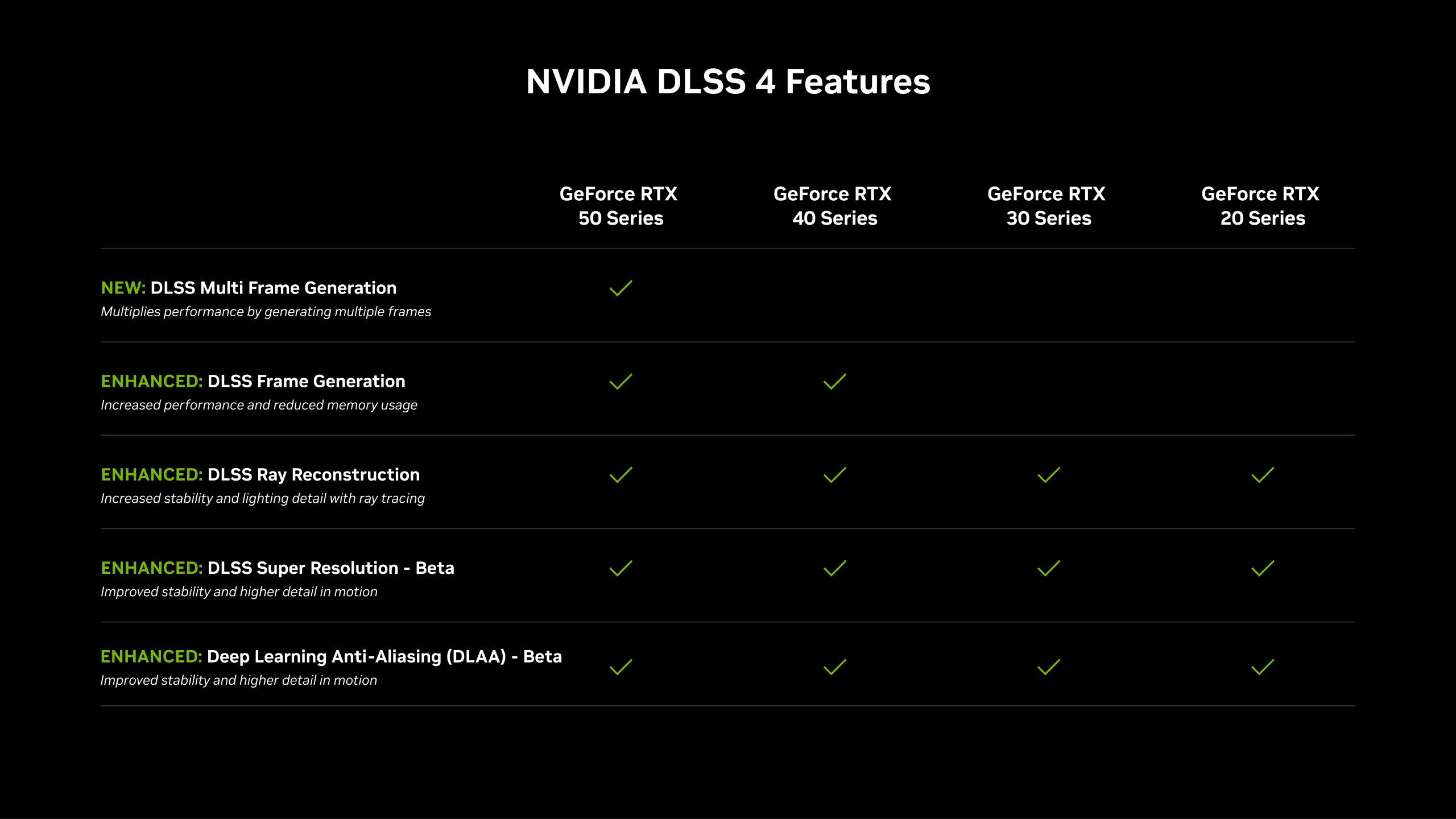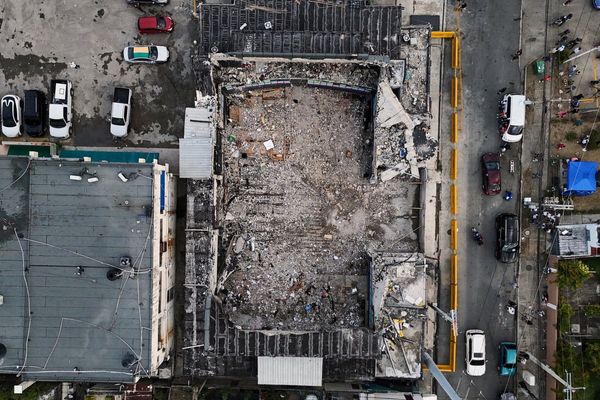
Nvidia has announced DLSS 4 at CES 2025, the shiniest new version of its mega-powerful upscaling tech. Not content to rest on its laurels with DLSS 3, the latest version boasts of Multi Frame Generation, which the company says can 'multiply frame rates by up to 8X over traditional brute-force rendering.'
Nvidia says the tech works in tandem with the rest of its suite of DLSS technologies, and is Tensor Core based. Latency is said to be halved for more responsive gameplay, with enhanced image quality over previous versions.
'This massive performance improvement on GeForce RTX 5090 graphics cards unlocks stunning 4K 240 fps fully ray-traced gaming' the company says.
That's quite the bold performance claim, although for what it's worth, the RTX 5090 looks like a monster of a card on paper. That plus some super advanced upscaling tech? We may well now live in a world where ray tracing and mega-high frame rates can go hand in hand.
It's not just frame generation that has received a fresh coat of paint, either.
DLSS Ray Reconstruction, DLSS Super Resolution, and DLAA will now be enhanced by transformers, which are based on the same architecture that powers AI models like ChatGPT and Google Gemini.
The RTX 50-series cards feature an AI Management Processor, Blackwell-enhanced Tensor Cores with FP4 support, and RTX Neural Shaders. It's all AI, all the time, it seems. Perhaps it's no wonder that DLSS 4 seems to engage frame rate hyperspeed on RTX 50-series cards with all the "enhanced" AI-based features enabled.
These enhanced features are said to improve image quality with improved temporal stability, less ghosting, and higher detail in motion. DLSS 3 is already pretty great at this (as I found in my own DLSS 3 vs FSR 3.1 testing), so I'm genuinely curious to see whether even some of the smaller flaws that make it past the older models are now fixed.
It's all well and good in theory, but until I've seen it running in person, I'll hedge my bets. Still, DLSS 3 is mighty impressive, so I'm excited to see just how much more performance and image quality are available in the latest version.

But for Multi Frame Generation, it's RTX 50-series only. That doesn't mean RTX 40-series owners miss out entirely, though, as enhanced DLSS regular frame generation, Ray Reconstruction, Super Resolution and DLAA seem to still be on the table if you have a (now last) generation card.
So, DLSS has some serious upgrades. Bring it on, that's what I say. If we're going to be marching into a future where upscaling is a vital component for gaming, I want to see as many improvements as Nvidia (and AMD, with FSR 4) can cram in.







